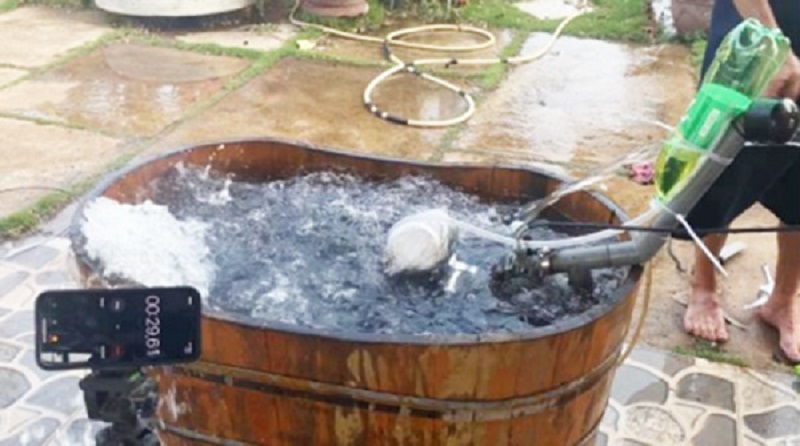Solutions to help motorbikes operate normally when flooded
A research team at Ho Chi Minh City University of Industry and Trade has developed a comprehensive mechanical solution to help protect motorbikes from flooding, allowing the engine to continue operating normally even when submerged deep through the exhaust pipe and engine block.

Testing the system when flooded. Photo: NNC
The reality of urban flooding often paralyzes traffic when many motorbikes stall due to water entering parts, such as spark plugs, exhaust pipes or air filters. Currently, there is no radical technological solution announced to completely handle this situation, and many people often make their own by attaching plastic pipes to the exhaust pipes, but this method is not feasible when the water is deep enough to reach the engine block, because water will flow into the air intake causing the engine to stall.
To overcome this problem, the research team proposed an integrated anti-flooding system, based on mechanical design modifications of the vehicle's fuel intake system, exhaust system and electrical system. The operating mechanism of this system is that when the vehicle is operating normally, the components still operate as usual. When encountering water, the air and water separator will distinguish and remove water from the engine, while the exhaust system is designed with baffles, connected by iron pipes to keep the pressure in the system higher than the water pressure, allowing the exhaust gas to escape without water overflowing. This principle is also applied to the exhaust system, where water will only enter a high-pressure gas chamber, preventing water from overflowing into the engine when the vehicle is not in operation. The electrical components and ICs are all arranged in sealed modules, with a waterproof protective layer, ensuring durable and safe operation in flooded conditions.
The system has been tested on a Wave model, in which the engine block was removed and an anti-flooding module was added. Tests showed that when the exhaust pipe or engine block was completely submerged for 15 minutes, the vehicle still started normally without any problems. In the near future, the team plans to integrate IoT technology, attach sensors and pre-set three control modes (maps) on the vehicle's ECU to optimize engine operation in each case: normal operation, flooded exhaust pipe or flooded engine block. This will help improve operating efficiency, suitable for the actual conditions of urban areas facing increasingly common flooding. This study was published in the Journal of Science of the University of Industry and Trade No. 2/2025, contributing to providing effective scientific solutions for urban traffic in extreme weather conditions.